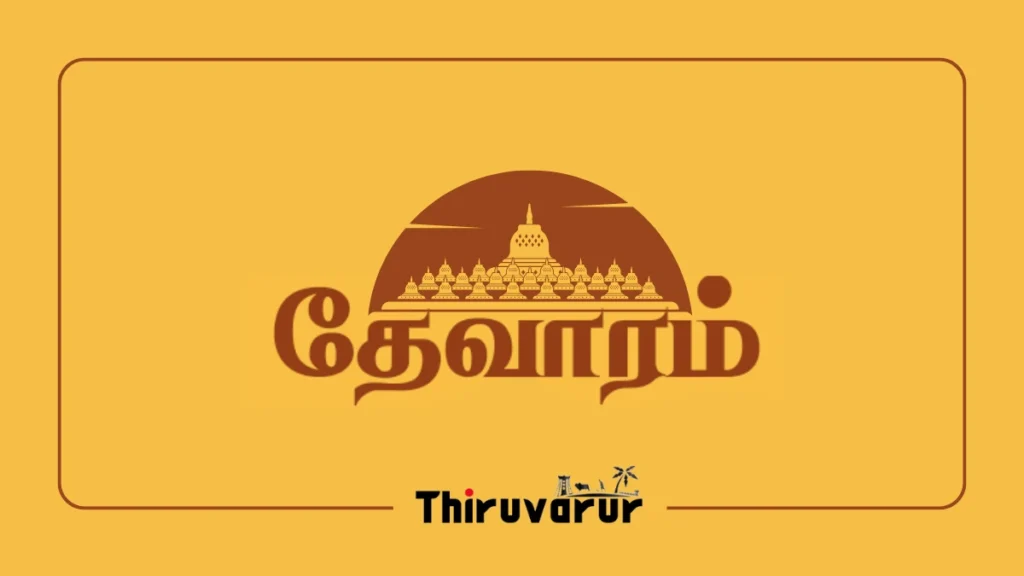Tevaram is a collection of hymns composed by three prominent Tamil saints—Tirugnana Sambandar, Appar, and Sankara Nayanar—devoted to Lord Shiva. These hymns, known for their devotional fervor, were composed between the 7th and 9th centuries CE. The Tevaram forms a key part of the Tamil Shaiva canon, alongside other works like the Tirukural and Tiruvacakam. Together, these texts help to shape the religious and cultural fabric of Tamil Shaivism.
The Tevaram is a collection of devotional songs and poems in praise of Shiva, the supreme god of the Shaivite sect of Hinduism. The Tevaram volumes contain the works of the three most prominent Shaiva Tamil saints of the 7th and 8th centuries: Sambandar, Appar, and Sundarar. Let’s have a look at Tevaram Overview.
1. The Saints of Tevaram
Tirugnana Sambandar
Tirugnana Sambandar was a child prodigy and a revered saint in the Tamil Shaiva tradition. He is credited with composing a significant portion of the Tevaram. His hymns focused on the omnipresence and grace of Lord Shiva. Known for his miraculous feats, including curing diseases and raising the dead through his hymns, his devotion to Shiva inspired many.
Appar (Tirunavukkarasar)
Appar, another great saint of the Tevaram, is known for his extensive hymns, which express his deep devotion to Shiva. Born into a Brahmin family, Appar initially lost faith in Shiva but later experienced a profound spiritual awakening. His hymns, also known as Tiruvarutpayan, emphasized the importance of devotion and the transcendent nature of God.
Sankara Nayanar
Sankara Nayanar was one of the earliest saints in the Nayanmar tradition. His hymns, though fewer in number compared to those of Appar and Sambandar, focused on Shiva’s presence in temples and the divine nature of the Lord. Sankara Nayanar is particularly revered for his ardent worship of Shiva through his songs.
2. Structure and Composition
The Tevaram consists of three books, each attributed to one of the saints:
- Tiruvisaippa: Composed mostly by Appar, this book contains hymns of praise.
- Tirukottu: Primarily the work of Tirugnana Sambandar, these hymns focus on Shiva’s greatness and the importance of divine grace.
- Tirupallantu: A collection of hymns, largely from Sambandar and Appar, which focuses on devotion, miracles, and divine intervention.
The hymns are written in Tamil and set to music, which is still sung in temples as part of the daily rituals and special festivals. They are often chanted or sung in a specific meter known as “Sama Veda” style, which makes them integral to temple worship.
3. Themes and Philosophy
The primary theme of Tevaram is the devotion to Lord Shiva. The hymns reflect a strong sense of personal and intense love for Shiva, who is depicted as merciful, kind, and omnipresent. Below are some of the key philosophical concepts of Tevaram:
Divine Grace
The central message of Tevaram is the importance of receiving divine grace from Lord Shiva. The saints emphasize that true liberation comes only through the grace of the Lord, rather than through mere rituals or sacrifices.
Emphasis on Bhakti (Devotion)
Tevaram heavily emphasizes bhakti, or devotion to Shiva, as the path to spiritual fulfillment and liberation. The saints describe their personal experiences of divine love and spiritual ecstasy, urging followers to surrender to Shiva and cultivate a deep personal connection with the deity.
Shiva as the Supreme God
Shiva is portrayed as the undivided, eternal Supreme Being who transcends all limitations. The hymns emphasize his attributes—whether as the cosmic creator, destroyer, or the one who resides in the heart of all beings. His form is described as both formless (in his aspect as Nataraja) and as the deity who manifests in temples.
4. The Role of Music and Temple Worship
The Tevaram is inextricably linked to the musical tradition of South India. These hymns are composed in different ragas (melodies), each intended to invoke specific moods or emotions related to devotion. The hymns are sung in temples as part of daily worship rituals, and they continue to form an essential part of Tamil Shaiva music.
In Tamil temples, Tevaram is chanted during the morning and evening prayers. Temples that were praised in the hymns became significant pilgrimage sites for followers of Shaivism, such as Chidambaram, Tiruvannamalai, Kanchipuram, and Tirupathy.
The Nadaswaram and Tavil, traditional South Indian instruments, are used during these temple performances, highlighting the integral role music plays in worship.
5. Significance in Tamil Culture
The Tevaram is not only a religious text but also a crucial part of Tamil cultural identity. Through its hymns, it has influenced Tamil art, literature, dance, and music for centuries. The tradition of Tevaram singing has helped preserve the Tamil language and its intricate classical music system.
Additionally, Tevaram has impacted the philosophical thought in Tamil Nadu and beyond. The concepts of divine grace, devotion, and equality presented in these hymns formed the foundation for the later development of the Bhakti movement, which spread across India.
6. Tevaram and the Shaiva Movement
The composition of Tevaram played a significant role in the revival of Shaivism in Tamil Nadu during the 7th to 9th centuries. During this period, the region witnessed a resurgence of devotion to Lord Shiva, which was also a reaction against the growing influence of Buddhism and Jainism. The hymns of the saints provided a unifying force, spreading the message of personal devotion and the importance of temple worship. The saints also critiqued the ritualistic practices of the time, advocating instead for an inner transformation through love and devotion.
As a result, Tevaram became one of the foundational texts for Shaiva Siddhanta, the philosophical system that became a dominant school of thought in the region.
7. The Influence of Tevaram in Modern Times
Today, the Tevaram continues to hold immense significance in Tamil Nadu and the broader South Indian region. The hymns are sung in temples, festivals, and during important religious ceremonies. Not only are they a part of religious practices, but they also serve as a bridge between ancient Tamil culture and modern Tamil spirituality.
The saints of the Tevaram are celebrated in annual festivals known as Aradhanas, where devotees gather in temples to sing these hymns in honor of the saints.
Tevaram in Literature
Tevaram also influenced later Tamil literature, contributing to the Panniru Thirumurai, a collection of sacred texts that represents the Tamil Shaiva canon. Its focus on religious devotion, divine love, and the importance of personal experience resonates in modern Tamil poetry and art.
The Tevaram stands as a monumental text in the history of Tamil literature and Shaivism. Through its powerful hymns of devotion and the profound philosophical messages it carries, the Tevaram continues to inspire millions of devotees around the world. Its legacy, rooted in the grace of Lord Shiva and the transformative power of love and faith, remains a key pillar in the spiritual and cultural landscape of Tamil Nadu and beyond.



